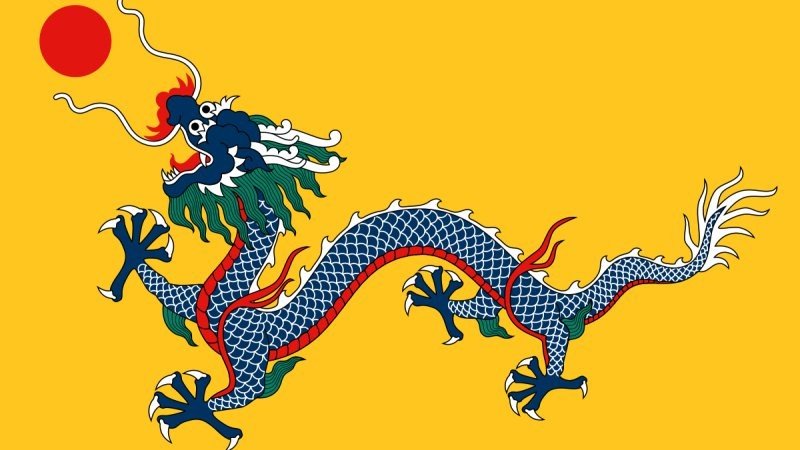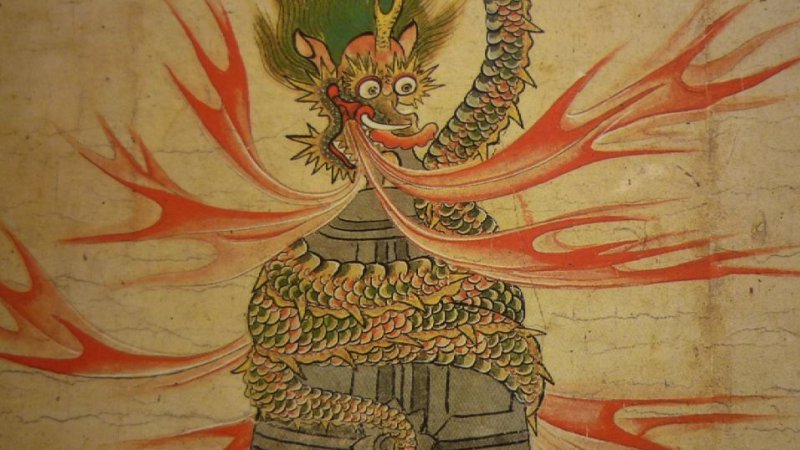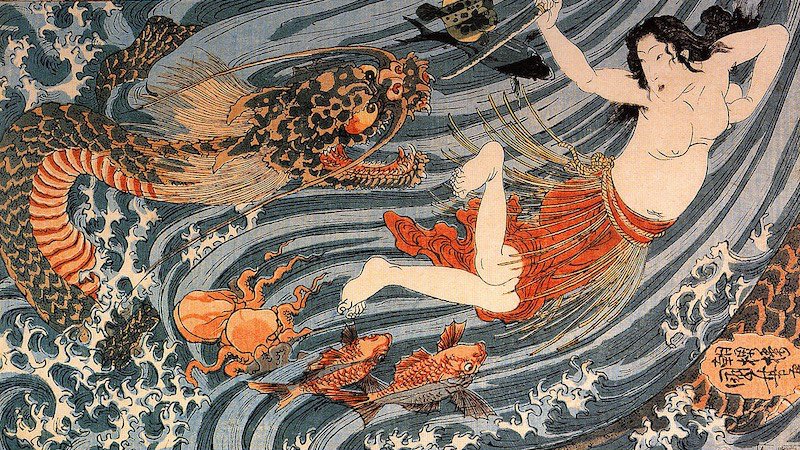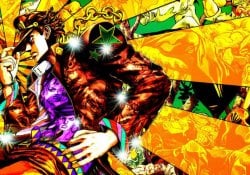In this article, we'll explore different ways to say "dragon" in the Japanese language, delving into the richness of this culture and understanding the subtleties of its vocabulary.
Dragons are mythical creatures that play an important role in the mythology and culture of many countries around the world. In Japan, these majestic beings are known to possess a variety of supernatural abilities and represent wisdom, strength and prosperity.
Have you noticed that in the Japanese language a single word can be written in different ways? Dragon is no different, let's see how to write dragon in Japanese and similar words.
We also recommend reading: Ryu – Know 14 Japanese Dragons
Índice de Conteúdo
竜 (りゅう, Ryū)
The most common word for dragon in Japanese is 竜 (Ryū). Japanese dragons, in general, have distinct characteristics from western dragons. This word can be used to refer to either Japanese, Chinese or Western dragons.

ラゴン (どらごん, Doragon)
ドラゴン (Doragon) is the Japanese word derived from the English “dragon”. This way of writing and pronouncing the word dragon is mainly used in international contexts or when referring to western dragons, which have a different appearance and characteristics than traditional Japanese dragons.
“Doragon” is often used in movie, book, and game titles that originate in or are influenced by Western culture. A great example of use is in the anime Dragon Ball.
Read also: What does Kamehameha mean in Dragon Ball Anime?

龍 (りゅう, Ryū)
龍 is another way of writing the word “dragon” in Japanese and has the same sound and meaning as 竜 (Ryū). However, 龍 is more commonly used in formal or literary contexts and is considered a more sophisticated and elegant way of writing "dragon".
Both kanji, 竜 and 龍, can be found in names of places, people, and works of art. Generally the character 龍 is used for Chinese dragons. They are often portrayed as long serpents with four legs and have a more sinuous and elegant appearance.

The article is still halfway through, but we recommend also reading:
龍神 (りゅうじん, Ryūjin)
龍神 (Ryūjin) is a word meaning "Dragon God" being used to refer to dragons that are considered deities in Japanese folklore.
Ryūjin is the god of the sea in Japanese mythology and is known for controlling the tides and waters. He is often depicted as a dragon with fish or serpent like features and is one of many examples of divine dragons in Japanese culture.

辰 (たつ, Tatsu)
辰 (Tatsu) is another term used to refer to dragons in the Japanese language, although it is less common than the others mentioned earlier. This term is most often found in the context of the Chinese zodiac, where the dragon is one of the twelve animals depicted.
In the Japanese lunar calendar, “Tatsu” represents the fifth sign of the zodiac being associated with people born in specific years such as 2000, 2012, 2024 and so on.
Individuals born in the Year of the Dragon are considered ambitious, courageous and highly motivated. In addition, the term “Tatsu” can be found in names of people and places that have a connection with the zodiac or with the characteristics attributed to the sign of the dragon.

天竜 (Tenryū)
天竜 (Tenryū) means "heavenly dragon" and is used to describe dragons associated with heaven and universe.
These powerful creatures are seen as symbols of strength, wisdom and protection, and often play an important role in Japanese legends and stories.
The term "Tenryū" can be found in the names of temples, martial art schools and even in sports teams.
地竜 (ちりゅう, Chiryū)
地竜 (Chiryū) translates as "Earth Dragon" used to describe dragons that live deep within the earth or that have a special connection to nature and the soil.
These dragons are portrayed as guardians of the land and protectors of natural balance, and are also associated with fertility.
Japanese Draconian Vocabulary
Finally, we'll leave you with more words related to dragons in Japanese:
- 竜 (りゅう, Ryū) - Dragon
- 龍 (りゅう, Ryū) - Dragon (more sophisticated form)
- 龍神 (りゅうじん, Ryūjin) - Dragon God
- 天竜 (てんりゅう, Tenryū) - Celestial dragon
- 地竜 (ちりゅう, Chiryū) - Earth's Dragon
- ドラゴン (どらごん, Doragon) - Dragon (derived from English)
- 辰 (たつ, Tatsu) - chinese zodiac dragon
- 海竜 (かいりゅう, Kairyū) - sea Dragon
- 雷竜 (らいりゅう, Rairyū) - thunder dragon
- 火竜 (かりゅう, Karyū) - Fire Dragon
- 氷竜 (ひょうりゅう, Hyōryū) - ice Dragon
- 風竜 (ふうりゅう, Fūryū) - Wind Dragon
- 水竜 (すいりゅう, Suiryū) - water dragon
- 金竜 (きんりゅう, Kinryū) - Gold dragon
- 銀竜 (ぎんりゅう, Ginryū) - silver dragon
- 木竜 (もくりゅう, Mokuryū) - wood dragon
- 鉄竜 (てつりゅう, Tetsuryū) - Iron dragon
- 虹竜 (にじりゅう, Nijiryū) - rainbow dragon
- 白竜 (はくりゅう, Hakuryū) - White Dragon
- 黒竜 (こくりゅう, Kokuryū) - black dragon
Here are more words related to dragons in Japanese, including characteristics, actions and elements associated with these mythical creatures:
- 龍の子 (りゅうのこ, Ryū no ko) - dragon cub
- 竜宮城 (りゅうぐうじょう, Ryūgū-jō) - Dragon Palace (abode of the Dragon God of the Sea, Ryūjin)
- 竜巻 (たつまき, Tatsumaki) - Tornado (literally, "dragon wind")
- 龍脈 (りゅうみゃく, Ryūmyaku) - Dragon Lines (Energy Lines on Earth, similar to the concept of "Ley Lines")
- 竜舌蘭 (りゅうぜつらん, Ryūzetsuran) - Dragon lily (plant type)
- 竜頭蛇尾 (りゅうとうだび, Ryūtōdabi) - Dragon's head, serpent's tail (a proverb describing something that starts out promisingly but ends badly)
- 竜の鱗 (りゅうのうろこ, Ryū no uroko) - dragon scales
- 竜の牙 (りゅうのきば, Ryū no kiba) - dragon fangs
- 竜の爪 (りゅうのつめ, Ryū no tsume) - Dragon claws
- 竜の翼 (りゅうのつばさ, Ryū no tsubasa) - Dragon Wings
- 龍潭 (りゅうたん, Ryūtan) - Dragon Lake (a lake or pond with legendary connections to dragons)
- 竜を操る (りゅうをあやつる, Ryū o ayatsuru) - control a dragon
- 竜と戦う (りゅうとたたかう, Ryū to tatakau) - fight a dragon
- 竜の力 (りゅうのちから, Ryū no chikara) - dragon power
- 竜の息 (りゅうのいき, Ryū no iki) - Dragon breath
- 竜の目 (りゅうのめ, Ryū no me) - Dragon Eyes
- 竜の尾 (りゅうのお, Ryū no o) - dragon tail
- 竜の吠える (りゅうのほえる, Ryū no hoeru) - Dragon's roar
- 竜の宝 (りゅうのたから, Ryū no takara) - dragon's treasure
Conclusion
In summary, the Japanese language has a variety of terms to refer to dragons, each with its own nuances and specific applications. These terms allow Japanese speakers to express the rich culture and symbolism associated with these mythical creatures in different and meaningful ways.







